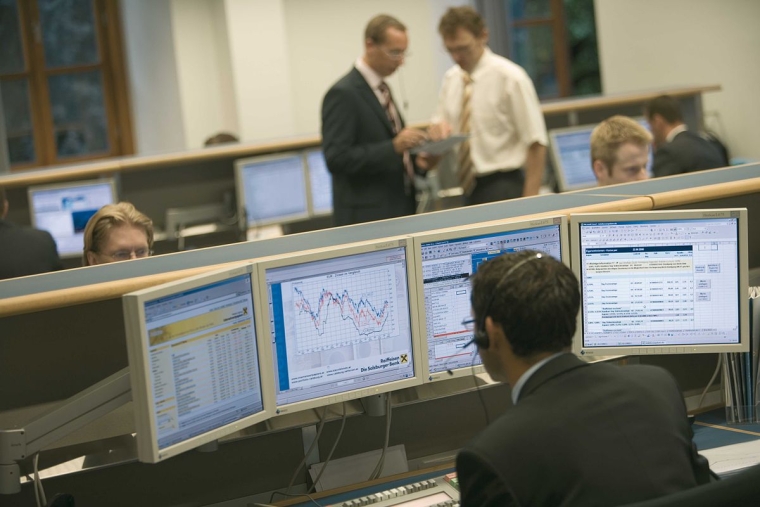
Equity markets have remained under pressure overnight, with US decision to place restrictions on Huawei continuing to weigh on sentiment. Moves in other markets have generally been contained, although the AUD benefited from the Liberal-National coalition’s unexpected election victory over the weekend.
The market’s focus remains squarely on US-China relations. The fall-out from the US decision last week to place restrictions on Huawei has continued to reverberate. Yesterday, Google announced that it would stop providing some updates to its Android operating system to Huawei for future smartphones, in response to the US government’s decision. While current Huawei phones wouldn’t be affected, its future smartphones could lose access to apps such as Gmail and Maps as well as the Google Play store and software updates, which would harm the appeal of Huawei phones outside China. Meanwhile, Bloomberg reported that US makers of semiconductors including Intel, Qualcomm, Xilinx. and Broadcom had told employees that they would stop supplying Huawei until further notice.
While the Huawei restrictions are purportedly due to national security concerns, China sees it as an attempt to slow its economic development. China’s ambassador to the EU slammed the measures on Huawei, saying "Chinese companies’ legitimate rights and interests are being undermined”, adding that there would be a “necessary response." While China hasn’t specifying how it intends to respond, commentators have highlighted the potential for China to make life more difficult for US businesses operating in the country and the possibility of consumer boycotts of US brands.
Equity markets have come under renewed pressure amidst signs that relations between the US and China are getting worse, not better, ahead of the expected meeting between Trump and Xi at the G20 late next month. The S&P500 is down 0.8% on the session while the NASDAQ has underperformed, and is down 1.6%. Semiconductor stocks have fallen for the third session running amidst these reports that major producers would halt sales to Huawei, a major purchaser of the equipment. The Philadelphia semiconductor index was down another 4% overnight, bringing its cumulative decline from the April highs to 16%.
Despite the falls in equity markets, global bond yields have ticked up overnight. The 10 year Treasury yield is 2bps higher, to 2.41%, while the 10 year German bund yield is up a similar amount, to -0.09%. Atlanta Fed President Bostic signalled a neutral stance in an interview overnight, saying “if you ask me how the scales are, I don’t feel like for me they are tilted more to the cut than to the hike…I think we are pretty much in balance.’’ The market continues to price almost 30bps of rate cuts this year and 60bps by the end of 2020 but, as yet, Fed officials have been reluctant to embrace the notion of rate cuts, beyond the discussion of risk scenarios (i.e. the economic outlook worsens). Chair Powell speaks this morning.
The USD is slightly weaker overnight, although it continues to hover near its year-to-date highs. The only economic data released in the major economies over the past 24 hours was Japanese GDP, which was much stronger than expected, coming in at 0.5% on the quarter versus market expectations of -0.1%. The market reaction was limited, with investors concentrating on the less impressive details of the GDP release. Net exports contributed the bulk of growth on the quarter due to a sizeable contraction in imports, hardly an encouraging sign for the economy.
The AUD has been the top performing currency this week, with the market reacting to the surprise victory for the Liberal-National coalition in the weekend’s election. The AUD opened around 1% higher on the market open yesterday morning, and while it has given back some of those gains, it remains up 0.6% from Friday’s close. The election result, which points to continuity in economic policy, may bolster Australian business confidence in the coming months, although there has only been modest impact on RBA rate cut expectations. The market prices a 70% chance of a May rate cut (down from 80% on Friday) and more than two cuts in total by mid-2020. Markets will be watching the release of the RBA minutes and Governor Lowe’s speech today, with our NAB colleagues expecting these to pave the way for a rate cut next month.
The stronger AUD has had a small positive impact on the NZD, which is up 0.2% so far this week to 0.6530. NZ rates were slightly higher across the curve. In domestic data, yesterday the PSI fell to its lowest level since 2012, suggestive of slower growth in the services industry (although it remains above the 50 level is supposed that divide expansion from contraction). The weakness was concentrated in a few specific areas (i.e. retailing, Canterbury and large-sized firms), and the timing of holidays this year could have played a part, but it’s another indicator pointing to downside risks to GDP growth.
Elsewhere, the RBNZ announced the next steps in its bank capital review in a media release yesterday. The RBNZ pushed back when it planned to make a final decision to November (from Q3 previously) and said the rules would take effect starting April next year. The RBNZ also said the transition period would last for “a number of years”, a more vague timeline than its previous proposal that banks be given five years to comply with the new rules.
There is another Global Dairy Trade auction tonight, and we are looking for prices to be flat or down slightly. Dairy prices have risen for 11 consecutive auctions, but the pace has moderated over recent auctions,
Get our daily currency email by signing up here:
Daily exchange rates
Select chart tabs
BNZ Markets research is available here.

We welcome your comments below. If you are not already registered, please register to comment
Remember we welcome robust, respectful and insightful debate. We don't welcome abusive or defamatory comments and will de-register those repeatedly making such comments. Our current comment policy is here.